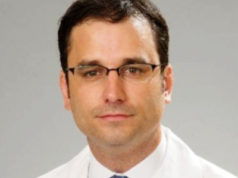
As part of the Vascular Annual Meeting (VAM) International Fast Talk session on the morning of Wednesday, June 15, Emiliano Chisci, MD, from San Giovanni di Dio Hospital in Florence, Italy, will be presenting the results of a 15-year follow-up of open repair (OSR) of an infrarenal abdominal aortic aneurysm (AAA). The results demonstrate, Chisci will tell the VAM 2022 gathering in Boston, that open repair of an infrarenal AAA is superior to endovascular aneurysm repair (EVAR), even in case of sac shrinkage.
Chisci et al, in their report, will detail long-term results from 1,777 consecutive AAA repairs in a single tertiary hospital between 2003 and 2018. In their written abstract, they note primary outcomes of all-cause mortality, AAA-related mortality, and reintervention rate. Open repair was offered to patients whose functional capacity was greater than, or equal to, four metabolic equivalents (METs), who were also predicted to live longer than 10 years. In contrast, the authors explain, EVAR was performed where patients had a hostile abdomen, they could be deemed anatomically feasible for a standard endovascular graft, and where their functional capacity was lower than four METs.
Of the 1,777 repairs included in the study, 47% (n=828) were open repairs and 53% (n=949) were EVARs. The mean age of patients was 78.3 years, 93.5% (n=1,661) were male, and mean follow-up was 79 months. Also of note, the authors define sac shrinkage as “a reduction of both anterior-posterior and latero-lateral diameter of the sac of at least 5mm at the last follow-up versus the first postoperative follow-up imaging.”
According to Chisci et al’s findings, the study yielded results showing that 30-day mortality was 0.7% (n=6) and 0.6% (n=6) for open repair and EVAR, respectively. Survival rate was 97.6% and 94% at one year, 83.6% and 75% at five years, 59.6% and 45.8% at 10 years, and 33.1% and 20.7% at 15 (p<0.001). The researchers specify, that where patients had sac shrinkage, a statistical difference was found (p=0.1). With regard to AAA-related mortality, at final follow-up, deaths were 1.8% (n=15) vs. 2.4% (n=23) in the open repair and EVAR patient groups (p=0.37). Lastly, freedom from intervention in the open repair vs. EVAR groups was 97% and 96% at one year, 96.5% and 88.4% at five years, 95.8% compared with 81.7% at 10 years, and 94.6% vs. 72.3% at 15 years (p<0.001).
Furthermore, the authors detail that reinterventions were greater in number in the EVAR group, although the sac shrinkage subgroup (p<0.001) underwent fewer reinterventions. However, this number remains greater than those in the open repair group.
By way of conclusion, Chisci et al opine that open repair of an infrarenal AAA is superior to EVAR, even in the case of sac shrinkage at very long-term follow-up. This, they state, is in line with current guidelines, and consequently, they offer the recommendation that the “[open repair] proportion of AAA repair should not be less than 40–45% in a vascular center.”
Chisci’s presentation takes place from 6:35–6:40 a.m in Room 210 of the Hynes Convention Center.












